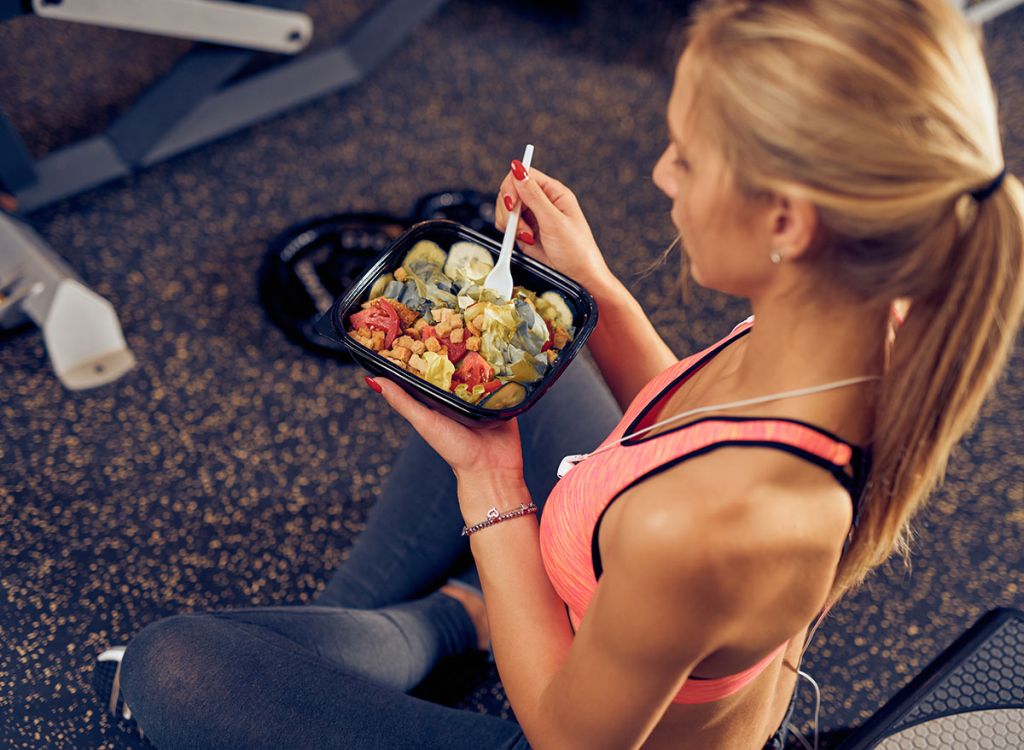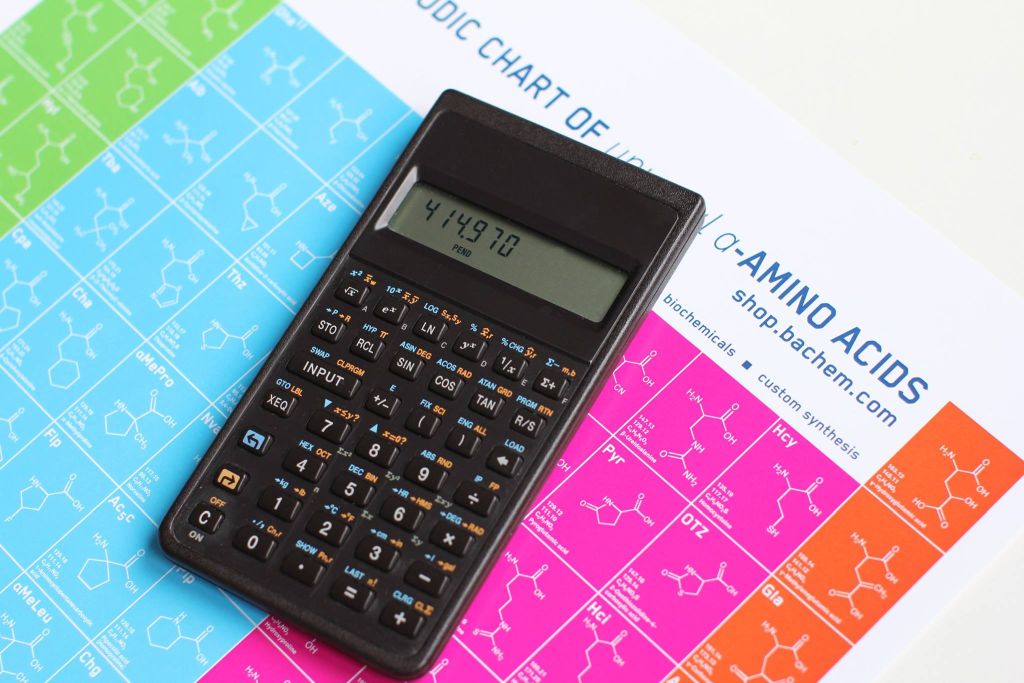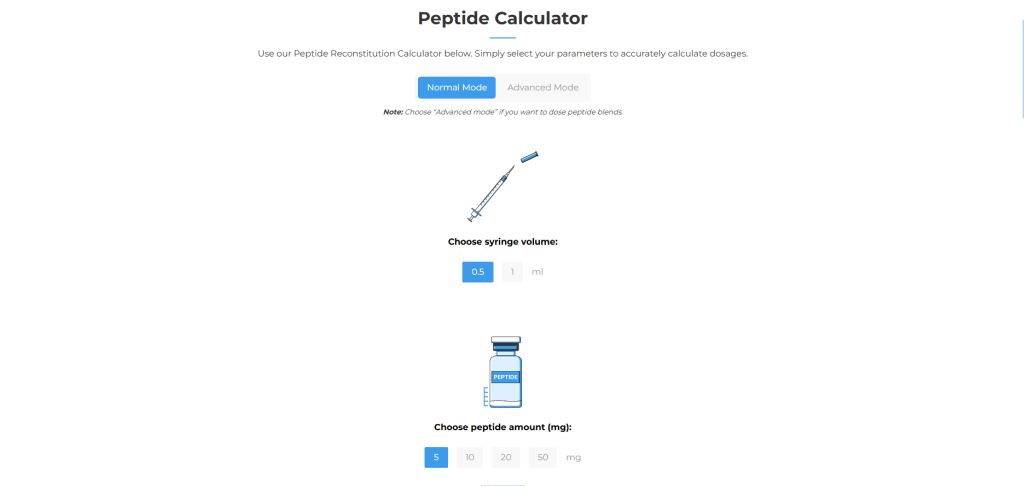Fitness
What to Eat Before and After a Workout

Eating the right foods before and after a workout can significantly impact your performance, recovery, and overall fitness results. Understanding the role of nutrition in exercise can help you fuel your body appropriately and maximize the benefits of your workouts.
Proper nutrition is a crucial component of any fitness regimen. The food you consume before and after exercise can influence your energy levels, endurance, and muscle recovery. This guide will explore what to eat before and after a workout to help you achieve your fitness goals effectively and sustainably.
1. Pre-Workout Nutrition: Fueling Your Performance
The primary goal of pre-workout nutrition is to supply your body with the energy it needs to perform at its best. Eating the right foods before a workout can enhance your stamina, strength, and endurance.
Carbohydrates for Energy
Carbohydrates are the body’s preferred source of energy during exercise. Consuming carbs before a workout ensures that your muscles have enough glycogen stores to fuel your activity. Opt for complex carbohydrates such as whole grains, fruits, and vegetables. For example, a bowl of oatmeal with banana slices or a whole-grain toast with almond butter can provide sustained energy.
Protein for Muscle Support
Including a moderate amount of protein in your pre-workout meal can help support muscle function and repair. Protein helps prevent muscle breakdown during exercise. Good sources of protein include Greek yogurt, eggs, and lean meats. A smoothie with Greek yogurt and berries or a scrambled egg with vegetables can be excellent pre-workout choices.
Timing Your Pre-Workout Meal
Timing is key when it comes to pre-workout nutrition. Aim to eat a balanced meal containing carbs and protein about 2-3 hours before exercising. If you’re short on time, a smaller snack 30-60 minutes before your workout can also be effective. For instance, a piece of fruit with a handful of nuts can provide a quick energy boost.

2. Hydration: Essential for Performance
Staying hydrated is vital for optimal exercise performance. Dehydration can lead to fatigue, reduced endurance, and impaired concentration. It’s important to start your workout well-hydrated and maintain hydration throughout.
Pre-Workout Hydration
Begin hydrating several hours before your workout. Drinking about 16-20 ounces of water two hours before exercise helps ensure your body is adequately hydrated. Continue to sip water as you get closer to your workout time.
Hydration During Exercise
During exercise, especially if it lasts longer than an hour or takes place in a hot environment, you need to stay hydrated. Drink 7-10 ounces of water every 10-20 minutes. For intense workouts, consider a sports drink that contains electrolytes to replenish lost minerals and maintain fluid balance.
Post-Workout Hydration
After your workout, rehydrate to replace any fluids lost through sweat. Drinking 16-24 ounces of water for every pound lost during exercise is a good rule of thumb. Including a beverage with electrolytes can further aid recovery.
3. Post-Workout Nutrition: Aiding Recovery
Post-workout nutrition is crucial for recovery, muscle repair, and replenishing energy stores. Eating the right foods after exercise helps your body recover faster and get ready for the next workout.
Protein for Muscle Repair
Protein is essential for muscle recovery and growth. Consuming protein after a workout helps repair muscle fibers that were broken down during exercise. Aim to eat 20-30 grams of protein within 30 minutes to two hours after your workout. Good options include a protein shake, chicken breast, or cottage cheese.
Carbohydrates to Replenish Glycogen
After exercise, your body needs to replenish glycogen stores depleted during your workout. Consuming carbohydrates post-workout helps restore these energy levels. Pair your protein source with carbs such as sweet potatoes, quinoa, or a banana. For example, a chicken and quinoa salad or a smoothie with protein powder and fruit can be effective post-workout meals.
Fat for Nutrient Absorption
While protein and carbs are the primary focus of post-workout nutrition, don’t forget healthy fats. Fats help absorb fat-soluble vitamins and provide sustained energy. Incorporate healthy fats like avocados, nuts, and olive oil into your post-workout meal.
4. Practical Meal and Snack Ideas
Balancing your meals and snacks around your workout schedule doesn’t have to be complicated. Here are some practical pre- and post-workout meal and snack ideas to fuel your fitness routine.
Pre-Workout Meals and Snacks
- Greek yogurt with honey and berries
- Whole-grain toast with almond butter and banana slices
- Oatmeal with chia seeds and sliced apple
- A smoothie made with spinach, protein powder, and almond milk
Post-Workout Meals and Snacks
- Grilled chicken with quinoa and steamed vegetables
- A protein shake with spinach, banana, and almond milk
- Scrambled eggs with avocado and whole-grain toast
- Cottage cheese with pineapple and a sprinkle of flaxseeds
Conclusion
Proper nutrition before and after a workout is essential for optimizing your performance and recovery. By fueling your body with the right balance of carbohydrates, protein, and fats, and maintaining proper hydration, you can enhance your exercise results and support your overall health. Implementing these nutritional strategies will help you make the most out of your workouts and achieve your fitness goals more effectively.
Fitness
Effective Methods to Speed Up Wound Recovery

Healing a wound is more than just a physical process, it’s about helping your body recover, regain strength, and avoid complications along the way. Whether it’s some small injury or a more significant injury, proper care can make a huge difference in how quickly and efficiently your body heals. Faster recovery not only helps reduce pain and inconvenience but also minimizes the risk of infection and scarring. The good news? There are practical, evidence-based methods you can follow to help your body’s natural healing power. In this guide, we’ll explore effective strategies to speed up wound recovery, giving you the tools and knowledge to take charge of your healing process.
The Role of Nutrition in Accelerating Healing
Good nutrition plays a very important role in speeding up the wound healing process. When your body is repairing itself, it demands extra nutrients in order to rebuild tissue, fight infection, and reduce inflammation. Protein is a must, as it provides the building blocks for new skin cells. Lean meats, eggs, and legumes are all excellent sources to include in your diet.
Vitamins like Vitamin C and A also help; they support collagen production and strengthen your immune system. Citrus fruits, leafy greens, and carrots are rich in these vital nutrients. Zinc is another key mineral that helps in cell growth and repair—nuts, seeds, and whole grains should be on your menu. Don’t forget to stay hydrated, because water helps transport needed nutrients to your wound.
For those exploring advanced healing options, supplements like BPC 157 may offer additional benefits. If you’ve been wondering where to buy bpc 157 supplement, make sure that you choose a reputable source to support your recovery effectively. Combining proper nutrition and smart supplements can make all the difference in healing faster and stronger.
How to Prevent Infection and Promote Safe Healing
Preventing infection is crucial for a smooth and effective healing process. The first step is to always keep your wound clean. Gently wash it with mild soap and water, also avoid using harsh chemicals like hydrogen peroxide which can damage healthy tissue. After cleaning, apply an antibiotic ointment that helps fight bacteria and cover the wound with a clean, breathable dressing.
Good hygiene is equally important. Wash your hands thoroughly before touching your wound or changing the dressing to avoid introducing germs. Regularly replace the bandage, especially if it becomes wet or dirty.
Monitor your wound closely for signs of infection, such as increased redness, swelling, warmth, pain, or any discharge. If you notice a fever or other concerning symptoms, consult a healthcare professional immediately.
Finally, give your body the support it needs to heal by eating a balanced diet, staying hydrated, and getting enough rest. With proper care and attention, you can minimize the risk of infection and promote safe, effective healing.

Can Exercise Impact Your Wound Recovery?
Exercise can play a role in your wound recovery, but it’s all about finding the right balance. Light physical activity can boost circulation, delivering oxygen and nutrients to the wound to support healing. Gentle stretching or walking also helps reduce stiffness and improves your overall well-being during the recovery process.
However, it’s important to avoid overexertion. Intense workouts or activities that strain the wounded area can slow healing or even reopen the wound. Always listen to your body and follow medical advice on when and how to resume physical activity safely.
If you’re ready to incorporate movement, start with low-impact exercises that don’t stress the injury. For example, if your wound is on your lower body, focus on upper-body stretches or seated exercises. For wounds on the upper body, you can try light walking or yoga.
Remember, rest is just as important as exercise during recovery. Pairing gentle movement with proper wound care, good nutrition, and adequate rest will give you the best chance at a faster, healthier recovery. Always check with your healthcare provider if you’re unsure about your activity level.
Conclusion
Speeding up wound recovery requires a mix of proper care, balanced nutrition, and mindful practices. By staying proactive, cleaning your wound, preventing infection, and supporting your body’s natural healing, you can recover faster and stronger. Take more care of your healing process today and get ready for a healthier tomorrow.
Fitness
A Guide to Measuring and Mixing for Optimal Results

Peptides have gained popularity in the fitness and health community for their potential benefits in muscle development, fat loss, and recovery. However, achieving optimal results requires accuracy in preparation, particularly in measurement and mixing. This guide will walk you through the essentials of dosing, using a peptide calculator, and proper reconstitution techniques to maximize effectiveness and safety.
Understanding Peptides and Their Importance
Peptides are short chains of amino acids that act as signaling molecules in your body, instructing cells to perform specific functions. When used correctly, they can enhance performance, improve recovery, and boost overall physical readiness. However, proper dosage and preparation require precision, which many users often overlook. Understanding how to calculate doses accurately using a peptide calculator is critical to avoiding missteps that could undermine your regimen or compromise your safety.
The Basics of Measuring Peptides
Accurate measurement starts with understanding the relationship between milligrams (mg) and milliliters (ml). Peptides are typically sold in vials with concentrations specified in milligrams, requiring users to reconstitute the powder with bacteriostatic water. The volume of water added dictates the mg/ml ratio, which forms the basis for calculating an optimal dosage.
For example, if a vial contains 10mg of a peptide and you dilute it with 2ml of water, every 1ml of solution will contain 5mg of the peptide. Precision is paramount, as even slight miscalculations could lead to under-dosing or overdosing.
Using a Peptide Calculator for Accuracy
Peptide users and athletes alike know that pinpoint precision can mean the difference between an effective regimen and wasted effort. Becoming proficient with a peptide calculator mg alongside mastering techniques in measuring, mixing, and administering—is not just a best practice; it’s a necessity for those who want optimal results. When planning your peptide routine, prioritize precision and take steps to ensure every detail—from reconstitution to storage—is handled with care.
A peptide calculator is an essential tool for ensuring accurate measurements. These calculators allow users to input the total peptide weight, the dilution volume, and the desired dosage to quickly determine the exact amount to draw into a syringe for administration. Most calculators integrate various metrics, allowing athletes to cross-check dosages safely. This tool is particularly useful for beginners or those working with multiple compounds, as it removes guesswork and ensures consistency in dosages.

Proper Peptide Reconstitution Techniques
Safe peptide usage requires mastering proper reconstitution methods. Follow these steps for optimal mixing:
- Sanitize – Clean the vial’s rubber stopper with an alcohol swab.
- Draw Water – Use a syringe to draw the required amount of bacteriostatic water.
- Inject Slowly – Inject the water slowly down the side of the vial rather than directly onto the powder to prevent frothing or damaging the peptide chains.
- Mix Gently – Gently swirl (never shake) the solution until the powder is fully dissolved, ensuring it is properly mixed and free of clumps.
Storing Peptides for Maximum Potency
Storage is crucial for maintaining peptide potency. Reconstituted peptides must be refrigerated, and some may even require freezing if stored for extended periods. Always check the stability and shelf life of each compound, as expired peptides lose their effectiveness. Proper labeling can also help keep track of multiple peptides and prevent confusion.
Maintaining Consistency in Dosing
Consistency is the foundation of any peptide regimen. Administering peptides at regular intervals and following dosing instructions precisely leads to the best results over time. To stay on track:
- Use timers, logs, or apps to track doses.
- Avoid skipping or mismeasuring doses, as this can disrupt progress.
- Follow professional guidelines to maintain a structured regimen.
Prioritizing Safety and Professional Guidance
Even experienced peptide users should prioritize safety. Before using any new peptide, consult a healthcare professional specializing in peptide therapy or performance medicine. Understanding potential interactions, contraindications, and appropriate dosing frequencies is essential. Taking this extra step significantly reduces the risks associated with improper usage.
Understanding Peptide Stacking and Compatibility
For those exploring multiple peptides, understanding how compounds interact is crucial. Some peptides work synergistically, enhancing each other’s effects, while poor combinations could lead to diminished results or adverse side effects. Research each compound thoroughly to ensure alignment with your performance goals before integrating them into your regimen.
Precision is Key
Peptide users and athletes alike know that pinpoint precision can make the difference between an effective regimen and wasted effort. Becoming proficient with a peptide calculator, mastering measurement and mixing techniques, and ensuring proper storage are essential best practices.
Success in peptide therapy or supplementation lies in the details. By investing time in learning proper preparation techniques, using the right tools, and aligning your practices with your performance goals, you can maximize the potential benefits of peptides and achieve optimal results.
Fitness
Healthy Eating Habits for a Busy Lifestyle

In today’s fast-paced world, maintaining healthy eating habits can be a challenge. Between juggling work, family, and social obligations, finding time to prepare nutritious meals often falls by the wayside. However, making mindful choices about your diet doesn’t have to be time-consuming or complicated. Here are some practical tips to help you eat healthily even when your schedule is packed.
1. Plan Ahead
Planning is crucial when it comes to maintaining a healthy diet. Dedicate a little time each week to plan your meals. Create a shopping list of the ingredients you’ll need and stick to it. This not only helps you avoid impulsive buys but also ensures that you have everything on hand to prepare nutritious meals.
Meal Prep: Spend a few hours over the weekend preparing meals for the week. Cook large batches of staples like grains, beans, and roasted vegetables, which can be mixed and matched to create different meals. Store them in individual containers so that you can grab a healthy meal quickly.
Smart Shopping: When grocery shopping, stick to the perimeter of the store where fresh produce, lean meats, and dairy products are usually located. Avoid the aisles with processed foods and snacks.
2. Make Use of Convenience Foods Wisely
Convenience foods can be lifesavers on busy days, but not all convenience foods are created equal. Choose options that are minimally processed and nutrient-dense.
Frozen Vegetables and Fruits: These are just as nutritious as fresh ones and can be added to soups, stews, and smoothies without the hassle of washing and chopping.
Pre-cut Veggies and Kits: These can save time and encourage you to eat more vegetables. Pair them with a protein source like grilled chicken or tofu for a balanced meal.
Canned Beans and Fish: These are excellent sources of protein and can be added to salads, soups, or whole-grain dishes. Just be sure to choose options with no added salt or rinse them to reduce sodium content.
3. Keep Healthy Snacks on Hand
Having healthy snacks readily available can help you avoid the temptation of vending machines or fast food. Stock up on snacks that are easy to grab and nutritious.
Nuts and Seeds: These are rich in healthy fats, protein, and fiber, making them a satisfying snack. Portion them into small bags to avoid overeating.
Fruit: Fresh fruits like apples, bananas, and oranges are portable and require no preparation. Dried fruits can also be a good option but choose those without added sugars.
Yogurt: Opt for plain Greek yogurt, which is high in protein and can be paired with fruits or a drizzle of honey for added flavor.

4. Focus on Balanced Meals
Aim to include a balance of macronutrients (proteins, fats, and carbohydrates) in your meals. This helps to keep you fuller for longer and provides sustained energy throughout the day.
Protein: Incorporate lean sources of protein such as chicken, turkey, fish, beans, and legumes. Protein helps to build and repair tissues and keeps you feeling satisfied.
Healthy Fats: Include sources of healthy fats like avocados, nuts, seeds, and olive oil. These fats are essential for brain health and can help you feel full.
Complex Carbohydrates: Choose whole grains like brown rice, quinoa, oats, and whole wheat bread. These provide long-lasting energy and are high in fiber, aiding in digestion.
5. Stay Hydrated
Drinking enough water is essential for overall health and can help control hunger. Often, thirst is mistaken for hunger, leading to unnecessary snacking. Carry a water bottle with you and aim to drink at least eight glasses of water a day.
Infused Water: If plain water feels boring, add slices of fruits, vegetables, or herbs to enhance the flavor without adding calories.
Herbal Teas: These are a great way to stay hydrated and can offer additional health benefits depending on the type of tea.
6. Practice Mindful Eating
Mindful eating involves paying attention to what you eat and savoring each bite. This can help you make healthier choices and avoid overeating.
Slow Down: Take your time to eat and chew your food thoroughly. This allows your body to register when you are full and prevents overeating.
Eliminate Distractions: Try to avoid eating in front of the TV or computer. Focus on your meal to enjoy it fully and recognize when you are satisfied.
Listen to Your Body: Eat when you are hungry and stop when you are full. Avoid eating out of boredom or stress.
7. Utilize Technology
There are numerous apps and tools available that can help you stay on track with your healthy eating goals.
Meal Planning Apps: Apps like Mealime or Paprika can help you plan your meals, create shopping lists, and provide healthy recipe ideas.
Nutrition Tracking Apps: MyFitnessPal or Cronometer can help you track your nutrient intake and ensure you are meeting your dietary needs.
Grocery Delivery Services: If you find it challenging to make time for grocery shopping, consider using a delivery service. Many services offer a wide range of healthy options and can save you time.
8. Be Kind to Yourself
It’s important to remember that no one is perfect. There will be times when you might indulge in less healthy options, and that’s okay. What matters is the overall pattern of your eating habits.
Don’t Stress About Perfection: Focus on making healthier choices most of the time rather than aiming for perfection. This approach is more sustainable and less stressful.
Enjoy Treats in Moderation: It’s perfectly fine to enjoy your favorite treats occasionally. The key is moderation and not letting occasional indulgences derail your overall healthy eating plan.
Learn from Slip-Ups: If you have a day where you didn’t eat as well as you hoped, don’t dwell on it. Learn from it and move on. Reflect on what triggered the slip-up and how you can avoid it in the future.
Conclusion
Maintaining healthy eating habits in a busy lifestyle is achievable with a little planning and mindfulness. By making use of convenient yet nutritious foods, keeping healthy snacks on hand, and focusing on balanced meals, you can fuel your body properly even when time is tight. Remember, the goal is progress, not perfection. Small, consistent changes can lead to significant improvements in your overall health and well-being. So, take a step today towards healthier eating, and your body will thank you for it.
-

 Business2 years ago
Business2 years agoMaximizing ROI: Effective Newsletter Strategies for Your Business
-

 Business2 years ago
Business2 years agoHow to Create a Sustainable and Eco-Friendly Home
-

 Mental Health1 year ago
Mental Health1 year agoHow Hobbies Can Transform Your Mental Health
-

 Fitness2 years ago
Fitness2 years agoHealthy Eating Habits for a Busy Lifestyle
-

 Fitness10 months ago
Fitness10 months agoEffective Methods to Speed Up Wound Recovery
-

 Fitness2 years ago
Fitness2 years agoAdapting Your Training Sessions for Different Fitness Goals
-

 Business2 years ago
Business2 years agoHow to Organize a Successful Workshop: A Step-by-Step Guide
-

 Mental Health2 years ago
Mental Health2 years agoCoaching Techniques for Overcoming Challenges












